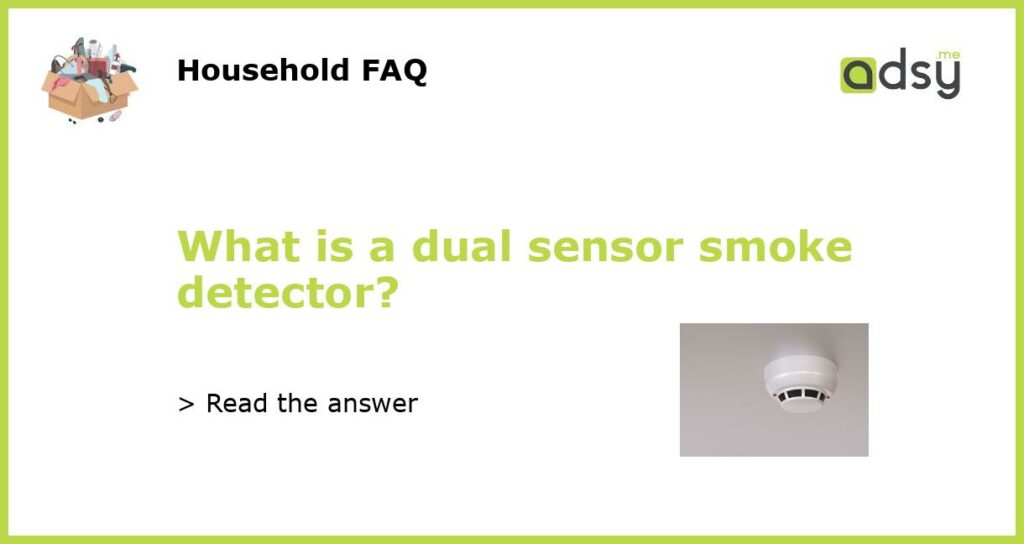What is a Dual Sensor Smoke Detector?
A dual sensor smoke detector is a type of fire alarm that uses two different types of sensors to detect smoke and fire. It combines the benefits of both ionization and photoelectric sensors to provide a more comprehensive level of protection against different types of fires.
How Does a Dual Sensor Smoke Detector Work?
A dual sensor smoke detector works by using two different technologies to detect smoke and fire – ionization and photoelectric sensors. The ionization sensor consists of a small, radioactive chamber that ionizes the air inside the detector. When smoke enters the chamber, it disrupts the ionization process, triggering the alarm.
On the other hand, the photoelectric sensor uses a beam of light that reflects off particles in the air. When smoke particles enter the chamber, they scatter the light and trigger the alarm. By using both sensors, a dual sensor smoke detector is able to quickly and accurately detect both fast-flaming and smoldering fires.
Benefits of Dual Sensor Smoke Detectors
1. Enhanced Fire Detection: The dual sensor technology provides a higher level of fire detection compared to single sensor smoke detectors. It can detect both fast-burning fires, which produce flames and little smoke, as well as slow-burning fires, which produce a lot of smoke but not many flames.
2. Reduced False Alarms: Dual sensor smoke detectors are less prone to false alarms compared to single sensor detectors. By combining two different types of sensors, they can better differentiate between harmless smoke, such as steam or cooking fumes, and real smoke from a fire.
3. Faster Response Time: Since dual sensor smoke detectors are able to detect different types of fires, they can provide a faster response time. This can be crucial in emergencies, as it allows occupants more time to evacuate and emergency services to be alerted promptly.
4. Versatility: Dual sensor smoke detectors are suitable for various locations, including residential homes, commercial buildings, and industrial settings. They offer a versatile solution for fire detection needs.
Considerations When Choosing a Dual Sensor Smoke Detector
When choosing a dual sensor smoke detector, there are a few factors to consider:
1. Certification: Look for smoke detectors that are certified by recognized safety standards organizations, such as UL (Underwriters Laboratories) or EN (European Standards). These certifications ensure that the detector meets the necessary quality and safety standards.
2. Power Source: Dual sensor smoke detectors can be hardwired or battery-powered. Consider your power source preferences and ensure that the detector has a battery backup in case of power outages.
3. Interconnectability: Some dual sensor smoke detectors can be interconnected with other detectors in your home or building. This means that when one detector senses smoke, all interconnected detectors will sound an alarm simultaneously, providing maximum safety.
4. Maintenance: Regular maintenance is essential for smoke detectors to ensure that they remain in proper working condition. Consider detectors with features such as self-diagnostic functions or indicator lights that show when the battery needs to be replaced.
Dual sensor smoke detectors offer a higher level of fire detection compared to single sensor detectors. By combining the benefits of both ionization and photoelectric sensors, they can detect different types of fires and provide enhanced protection. When choosing a dual sensor smoke detector, consider factors such as certification, power source, interconnectability, and maintenance requirements to ensure optimal safety and functionality.






